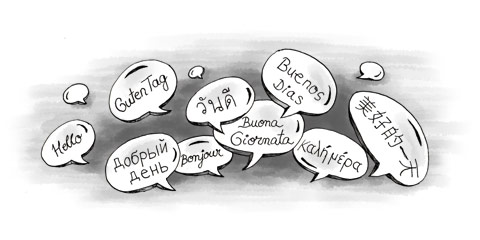The official language of Chile is Spanish but by law, the indigenous languages are protected and their use is encouraged. They can be taught, especially when there is a large indigenous population in the school, they can also be used in media and the traditional indigenous names are recognised in the civil registration and have their own transcription norms.
In reality, only 5% of the Chilean population is indigenous and some of their languages have been lost. The biggest indigenous community is Mapuche and their language, Mapudungun is spoken by around one or two hundred thousand people. Other languages, such as Aymara, Quechua and Rapa Nui are also common but count a lot less speakers than Mapudungun.
Spanish is a Romance language, its grammar comes from Latin, as well as French, Italian, Portuguese and Romanian grammar, but Spanish also has Greek and Arab and some Germanic language influence, mostly in the vocabulary.
Sentences and words can be very long. The most difficult part to master for students that are not native in any Romance language is the many different tenses in verbs, very specific for past, present and future and the different between “Ser” and “Estar”, both meaning “To be”.
Spanish speakers like the sound of words, so they may use them just because they sound nice or fun, especially when joking with friends. They tend to be talkative, which can be of help when learning the language.
Everything can be expressed through the intonation - politeness, anger, affection. So be careful, the same words can mean different things just because of the tone you are using. When speaking, natives like to use diminutives or augmentatives which have many different suffixes depending on the region. Become familiar with them, they can make a semantic difference at times.

